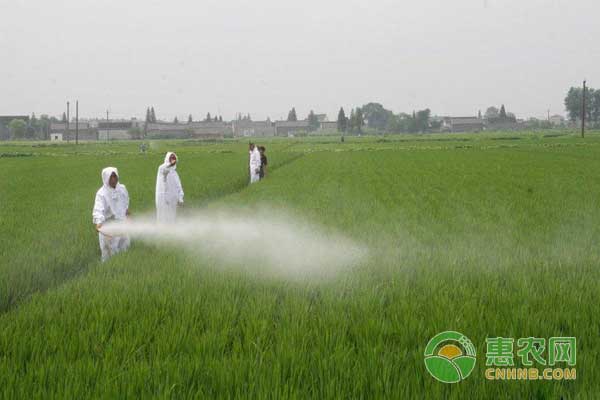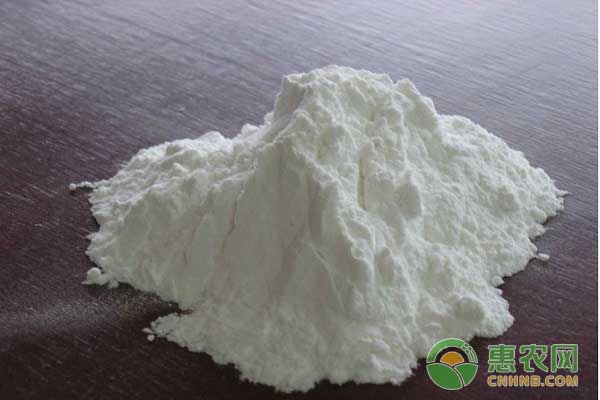In recent years, as the planting scale in China has increased, the occurrence of pests and diseases of crops has become more and more frequent and more serious. The occurrence of pests and diseases on crops will inevitably lead to a decline in economic benefits. Therefore, growers are paying more and more attention to the prevention and control of pests and diseases. Only the correct use of agricultural fungicides can achieve twice the result with half the effort.
First, spray method
1. Spray method. Spraying is the use of a spray device to spread the liquid under a certain pressure or centrifugal force to form a fine mist evenly covering the crop or weed. It is the most widely used method in production. The method is applicable to pesticide formulations such as emulsifiable concentrates, water-based agents, wettable powders, suspending agents, soluble powders, etc., and is required to be evenly and evenly applied to the target to have a uniform mist on the target. In practical production applications, it is usually divided into three types: constant spray, low-volume spray and ultra-low-volume spray.

(1) Constant spray. The amount of spray liquid ≥ 450 L / hm is a targeted spray method, especially suitable for spraying protective fungicides. The constant spray has low work efficiency and high labor intensity. A commonly used device is a manual sprayer.
(2) Low volume spray. Spraying liquid volume 15~450 L/hm is a combination of targeted and drifting spray method. It saves medicine, saves labor, and is suitable for spraying systemic fungicide. It can be used for large-area disease control but not for spraying and weeding. Agents and highly toxic pesticides. Commonly used instruments are motorized sprayers.
(3) Ultra low volume spray. Spraying less than 15 L/hm is also a drift-to-spray spray suitable for spraying systemic agents but not for spraying protective fungicides. Commonly used application equipment is a mobile ultra-low volume sprayer. 2, dusting method. The powder should be dry and free of debris and agglomeration. Pay attention to adjusting the opening of the powder door to control the amount of powder sprayed during dusting. When the powder is sprayed in the field, it is best to be perpendicular to the wind direction. The direction of the powder is consistent with the wind direction or slightly angled and the powder head is kept on the downwind side of the human body. Pay attention to the use of topography and wind direction when spraying in the forest area. When using the dew on the surface of the crop at night, it is better to spray the powder, but to prevent the powdery mouth from contacting the dew.
Second, soil treatment seed treatment
1. Soil treatment method. In the soil treatment, the powder is uniformly applied to the ground with fine soil, fine sand, etc., and then ploughed and ploughed. Mainly used to control soil-borne diseases. The advantage is that the medicament does not drift and has little effect on natural enemies. The disadvantage is that it is difficult to spread evenly and it needs to be continuously supplied with water before it can be used. For example, if the dosage of 50% thiophanate-methyl WP is 15~30 kg/hm, add appropriate amount of fine soil, mix and evenly spread and plow the soil.
2. Seed treatment method. Seed treatment can control seed-borne diseases and protect seedlings from pathogens in the soil. Treatment of seeds with systemic agents can also control above-ground diseases. Including seed dressing, soaking seeds (dipping seedlings), stuffing three ways. Seed dressing is a method of mixing seed or soil-borne diseases with a certain amount of powder or liquid and mixing with seeds. The amount of seed dressing is generally 0.2%~0.5% of the weight of the seed; soaking seeds (dipping seedlings) means soaking the seeds (seedlings) in a certain concentration of the liquid, and after a certain period of time, the seeds or seedlings are absorbed by the liquid. Pathogens; the practice of stuffing is to spread the seeds on the ground, spray the seeds with the diluted solution evenly, stir them evenly, and then dry them for 1 day and night.
Third, fumigation method
The fumigation method is a method for killing germs by using a toxic gas produced by a volatile chemical agent, generally under closed conditions, and is used for controlling germs in greenhouses, warehouses, soils or seedlings, and has high work efficiency and good control effect. , the effect is fast and so on. However, the space for fumigation requires strict sealing conditions, and the protected area is best carried out in the morning or evening. For example, 30% chlorothalonil aerosol fumigation can be used to control the flower diseases of the facility. The dosage is 300~400g/667m every 7~10d once and pay attention to the closed doors and windows.
Fourth, the smear method
The drug for systemic action is directly applied to the young part of the plant, or the trunk skin is scraped off to expose the phloem, and the drug is applied to the body to transport the body fluid to various parts. This method is less safe for natural enemies.

Five, high pressure injection method and perfusion method
The high-pressure injection method is a method for injecting a medicament into a plant by a special high-pressure trunk injector for controlling diseases. The method has high utilization rate, quick effect, long-lasting effect, no environmental pollution, and requires cork or after application. The mud seals the injection hole; the infusion method is to inject the liquid into the phloem and the xylem of the tree with a syringe, or to inject the liquid into the tree with an infusion bottle and insert the needle into the appropriate part to inject the liquid.
Sixth, rooting method
In the growing season of plants, plant roots can be regularly used to prevent plant diseases. The protective fungicide can prevent root diseases and other soil-borne diseases during the plant growth period; the systemic fungicides can be rooted and the medicament can reach the ground through the absorption of roots, which can prevent the diseases in the lower parts and prevent them. Aboveground disease. If the fungicide has a systemic root irrigation, it can be directly absorbed into the plant by the roots of the plant and transmitted to the ground. It can not only prevent underground diseases (such as root rot) but also prevent aboveground diseases (such as gray mold, anthrax). Sick, etc.).
The above is the use of agricultural fungicides, only the correct application method can be used to cure the disease!
Basic inorganic chemicals, compound, materials
Basic Inorganic Chemicals,Ammonia Water Solution,Ammonium Hydroxide Solution,Ammonium Hydroxide
Wuxi Yangshan Biochemical Co.,Ltd. , https://www.yangshanchem.com